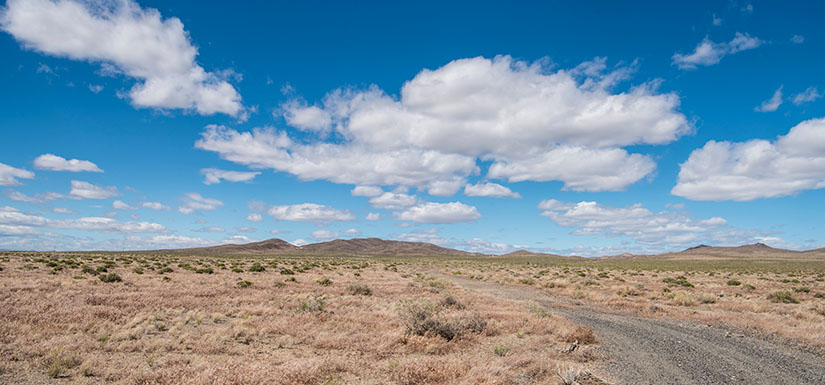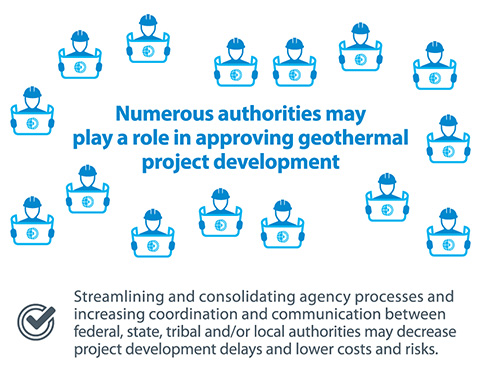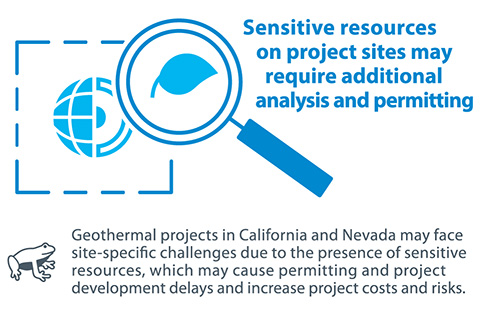Clearing the Path for Renewable Geothermal Project Development
NREL Research Identifies Opportunities To Streamline Permitting Process Around Geothermal and Its Nontechnical Deployment Barriers

What is stopping clean geothermal energy from rapid expansion?
A recent National Renewable Energy Laboratory (NREL) study sought to solve part of the puzzle.
Instead of focusing on technical roadblocks—which might include difficulties identifying optimal locations or high drilling costs—researchers examined the nontechnical barriers that can also dramatically impact geothermal project timelines, budgets, and approvals.

The results of the new study, Non-Technical Barriers to Geothermal Development in California and Nevada, present insights into addressing the nontechnical obstacles hindering geothermal project development.
The research was conducted by NREL Senior Legal and Regulatory Analyst Aaron Levine, Legal and Regulatory Analyst Ligia Smith, and the team at the Strategic Energy Analysis Center with funding and support from the U.S. Department of Energy's Geothermal Technologies Office.
"California and Nevada are the largest producers of geothermal energy in the United States," Levine said. "We explored challenges in developing geothermal resources there to inform best practices for California and Nevada as well as other states as use of this resource expands."
Geothermal resources represent a vast domestic energy supply that can provide a flexible and reliable source of renewable electricity. But, like any development, geothermal projects are subject to numerous permits, authorizations, and other regulatory requirements at the federal, state, and local levels. These steps are necessary to address potential environmental and resource impacts at geothermal project sites but may also act as barriers to geothermal deployment, causing longer timelines and increasing costs.
The report reveals numerous nontechnical barriers to geothermal development, including those created by economic, ecological, regulatory, permitting, and cultural factors, as well as ways to streamline the process. A new fact sheet also summarizes the results.
"The report identifies areas to improve upon to make faster adoption of geothermal projects a reality without sacrificing the quality of review or ability to honor community concerns," Levine said.
Why California and Nevada?
Levine previously co-led a U.S. Department of Energy GeoVision Task Force dedicated to advancing geothermal project development from 2016 to 2018. He said the results of that study suggested seeking out more state and local perspectives.
The task force report led to the nontechnical barriers research focusing on California and Nevada. Both states present the largest opportunities for geothermal energy adoption in the nation, though with very different scenarios for making it happen.
"California has some of the most stringent permit regulations in the nation, while Nevada's are viewed as less stringent," Levine said. "Some geothermal projects in California have taken years to secure the proper permits and community approval for various reasons—some preventable and some unavoidable. This new study seeks to help future projects with the preventable hurdles."
NREL analyzed various agency (federal, state, and local) geothermal regulatory and permitting processes that may impact geothermal project development at four selected sites. Researchers also investigated the cost and timeline implications for geothermal projects, as well as the results of a qualitative study focused on interagency coordination and collaboration efforts for geothermal projects located in California and Nevada.

The analysis found that geothermal project development timelines may be impacted by dual federal and state environmental review processes, duplicative permitting requirements, and coordination efforts between federal, state, and local authorities including agencies and tribes. For example, geothermal projects in California are potentially subject to environmental review processes at the federal (i.e., National Environmental Policy Act [NEPA]) and state (i.e., California Environmental Quality Act) level at each stage of geothermal development (leasing, exploration, drilling, and utilization).
In addition, geothermal projects in California and Nevada may encounter site-specific natural and cultural resource complications that can lead to permitting and project delays. These may include issues associated with protecting water quality and water resources, sensitive and endangered species, and cultural sites.
"Geothermal is very location specific—if you move a mile in either direction you might not be able to access the reservoir anymore," Levine said. "Finding ways to overcome duplicative processes is critical to bringing 24/7 renewable energy to communities."
Paths Forward
Ultimately, the analysis found that protracted geothermal development timelines caused by unnecessary permitting steps (beyond those essential to safeguarding communities and natural resources) or duplicative reviews may increase project costs and economic uncertainty. For example, delays in project construction and completion timelines may result in loss of generated electricity revenue, additional financing costs, and penalties incurred for failure to deliver electricity according to power purchase agreements.
"A big impact for geothermal development can come from better information sharing across all levels of government," Levine said. "This may even create cost and time efficiencies for agency staff."
The analysis identified best practices that can reduce delays while still meeting community needs and ensuring environmental rigor. These include:
- Improving existing environmental review documents (e.g., NEPA documents, baseline studies)
- Developing interagency memorandums of understanding, which may decrease project permitting delays by increasing interagency coordination and communication
- Developing comprehensive and agency-integrated permitting and review processes, thereby reducing duplication and streamlining existing procedures.
"Implementing these steps in geothermal project development may reduce overall timelines, costs, risks, and uncertainties," Levine said, "leading to a larger part of our grid being made up of clean, renewable geothermal energy."
To learn more, watch the recorded webinar: Non-Technical Barriers to Geothermal Development in the Western United States.
Last Updated May 28, 2025
